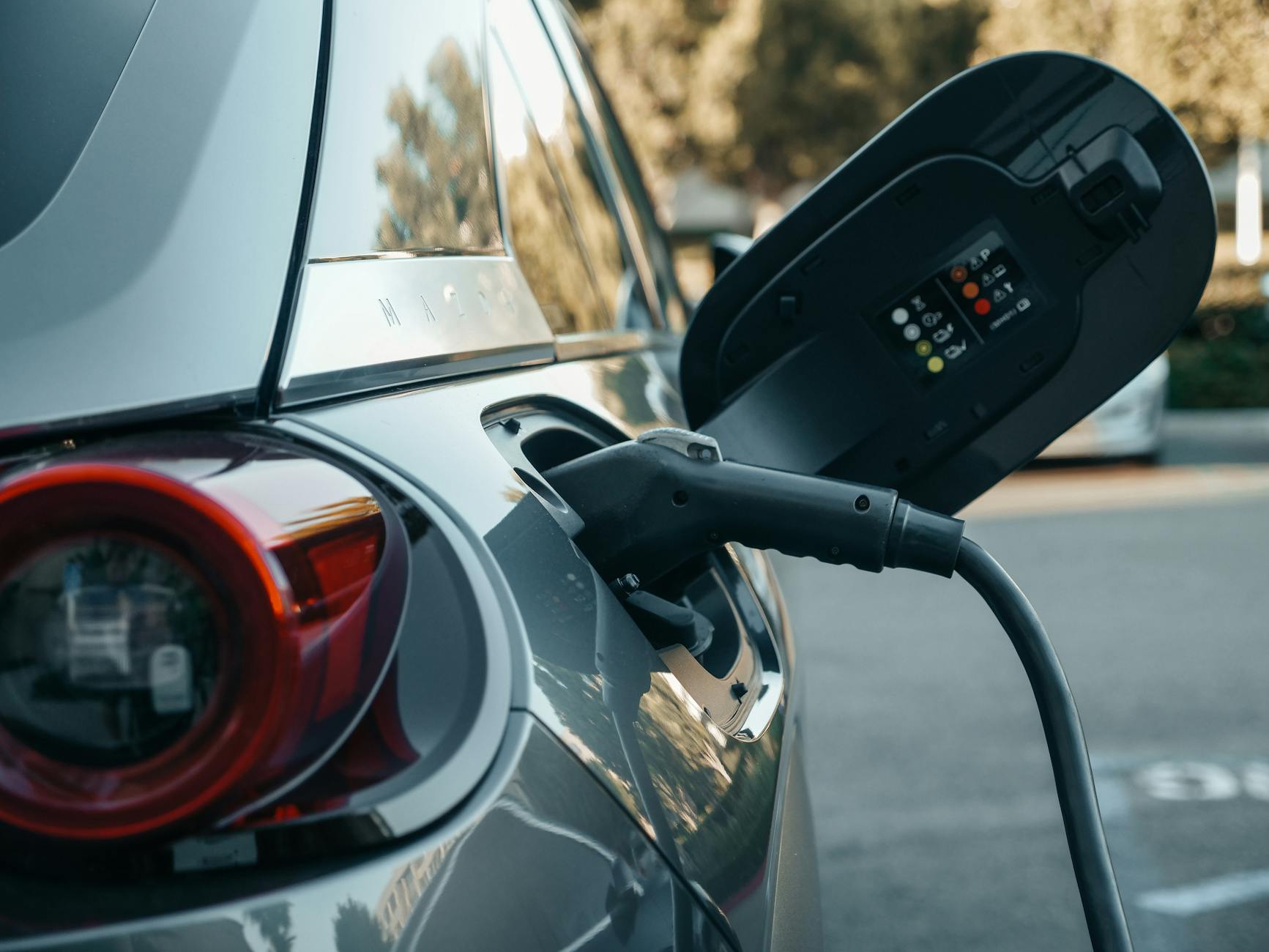As I scrolled through online car listings, a used electric vehicle (EV) caught my eye. The price tag was surprisingly low, and I couldn’t help but wonder: Is this too good to be true? 🤔 Like many budget-conscious car shoppers, I’ve been tempted by the allure of used EVs and their seemingly affordable prices. But as I dug deeper, I realized there’s more to the story than meets the eye.
Sure, the initial cost savings of a pre-owned electric car can be enticing. But what about the long-term expenses? Are we really saving money in the grand scheme of things? These questions led me down a rabbit hole of research, uncovering some surprising truths about the real costs of owning a used EV. In this blog post, I’ll share my findings and help you navigate the complex world of electric vehicle ownership.
Join me as we explore the initial cost savings, long-term operating costs, and hidden expenses of used EVs. We’ll compare the total cost of ownership and examine the factors that affect their long-term value. By the end, you’ll have a clearer picture of whether a used EV is truly the budget-friendly option you’ve been searching for. Let’s dive in and uncover the truth about the long-term costs of used electric vehicles! ⚡🚗💰
Initial Cost Savings of Used EVs

Lower purchase price compared to new EVs
When I’m in the market for an electric vehicle, one of the first things I notice is the significant price difference between new and used models. I’ve found that used EVs often come with a much lower sticker price, making them an attractive option for budget-conscious buyers like myself.
For instance, I’ve compared the prices of popular EV models and created this table to illustrate the potential savings:
| EV Model | New Price | Used Price (3 years old) | Potential Savings |
|---|---|---|---|
| Tesla Model 3 | $46,990 | $35,000 | $11,990 |
| Nissan Leaf | $28,040 | $18,000 | $10,040 |
| Chevy Bolt | $31,995 | $22,000 | $9,995 |
These figures are based on my research and may vary depending on factors like location and vehicle condition. However, they clearly show that I can save thousands of dollars by opting for a used EV.
Depreciation already absorbed by previous owner
One of the major advantages I’ve discovered when considering a used EV is that the previous owner has already absorbed a significant portion of the depreciation. This is a crucial factor in my decision-making process, as new cars typically lose 20-30% of their value in the first year alone.
Here’s why this matters to me:
- Lower financial risk
- Better value for my money
- Potential for slower depreciation moving forward
- Opportunity to own a higher-end model for less
By choosing a used EV, I’m essentially letting someone else take the biggest depreciation hit. This allows me to get more car for my money and potentially enjoy a slower rate of value loss over time.
Availability of government incentives for used EVs
While many people assume that government incentives are only available for new electric vehicles, I’ve found that this isn’t always the case. In fact, there are several programs and incentives that can make used EVs even more affordable for me.
Some of the incentives I’ve come across include:
- State-specific rebates for used EV purchases
- Tax credits for installing home charging stations
- Reduced registration fees in certain areas
- Access to HOV lanes and preferential parking
It’s important for me to research the specific incentives available in my area, as they can vary significantly by location. However, these additional savings can make a used EV an even more attractive option for my budget.
When I consider all these factors together – the lower purchase price, absorbed depreciation, and potential incentives – I find that used EVs offer substantial initial cost savings. This makes them a compelling choice for those of us looking to enter the world of electric vehicles without breaking the bank. Of course, it’s crucial to remember that these initial savings are just one part of the equation. To get a complete picture of the long-term value, I need to consider the operating costs as well.
Long-Term Operating Costs

Lower fuel costs compared to gas-powered vehicles
When I compare the long-term operating costs of used EVs to traditional gas-powered vehicles, one of the most significant advantages I’ve noticed is the lower fuel costs. As an EV owner, I’ve experienced substantial savings on my energy bills. Let me break it down for you:
| Aspect | Gas-Powered Vehicle | Electric Vehicle |
|---|---|---|
| Fuel Type | Gasoline | Electricity |
| Cost per Mile | $0.10 – $0.15 | $0.03 – $0.05 |
| Annual Fuel Cost* | $1,500 – $2,250 | $450 – $750 |
*Based on 15,000 miles per year
These figures demonstrate why I’m so enthusiastic about the fuel cost savings of EVs. Over the years, I’ve found that charging my EV at home, especially during off-peak hours, has led to even greater savings.
Reduced maintenance expenses
Another aspect of EV ownership that I’ve come to appreciate is the reduced maintenance costs. Here’s a list of common maintenance tasks that I no longer need to worry about with my EV:
- Oil changes
- Transmission fluid replacements
- Spark plug replacements
- Exhaust system repairs
With fewer moving parts and a simpler drivetrain, I’ve noticed that my EV requires less frequent service visits. This not only saves me money but also time and hassle.
Battery health and potential replacement costs
While EVs offer significant savings in many areas, I always make sure to consider the battery health and potential replacement costs. In my experience, modern EV batteries are designed to last for many years, often outlasting the vehicle itself. However, I’m aware that factors like charging habits, climate, and usage patterns can affect battery longevity.
Most manufacturers offer warranties on EV batteries, typically ranging from 8 to 10 years or 100,000 to 150,000 miles. If a replacement is needed outside the warranty period, it can be expensive. However, I’ve found that proper care and maintenance can significantly extend battery life, minimizing this potential cost.
Insurance considerations for used EVs
When it comes to insuring my used EV, I’ve discovered that rates can vary. Some insurers offer lower premiums due to the reduced maintenance needs and lower risk of fire compared to gas-powered vehicles. However, others may charge higher rates due to the potentially expensive battery replacements.
I always recommend shopping around for insurance quotes and highlighting the safety features of your EV to potential insurers. In my experience, many insurance companies now offer specialized EV policies that can provide better coverage at competitive rates.
Now that we’ve explored the long-term operating costs of used EVs, it’s important to consider some hidden expenses that might not be immediately apparent.
Hidden Expenses to Consider

Charging infrastructure setup at home
When I decided to purchase a used EV, I quickly realized that one of the hidden expenses I needed to consider was setting up a charging infrastructure at home. While it’s possible to rely solely on public charging stations, having a home charging setup offers convenience and can save money in the long run.
The cost of installing a home charging station can vary significantly depending on several factors:
- Charger type (Level 1 vs. Level 2)
- Electrical system upgrades
- Installation complexity
- Local labor costs
Here’s a breakdown of the typical costs I encountered:
| Item | Cost Range |
|---|---|
| Level 1 Charger | $0 – $300 |
| Level 2 Charger | $300 – $1,000 |
| Installation | $300 – $1,500 |
| Electrical Upgrades | $0 – $2,000+ |
I found that while a Level 1 charger (which uses a standard 120V outlet) is the most affordable option, it charges much slower than a Level 2 charger. For daily use, I decided to invest in a Level 2 charger, which required some electrical upgrades in my home.
Potential software update fees
Another hidden expense I discovered was the potential for software update fees. Unlike traditional vehicles, EVs often rely heavily on software for various functions and features. While many manufacturers offer free over-the-air updates, some may charge for significant upgrades or new features.
Some potential software-related costs include:
- Feature unlocks (e.g., enhanced autopilot)
- Infotainment system upgrades
- Performance boosts
- Extended range updates
It’s important to research the specific make and model of the used EV you’re considering to understand their software update policies and potential future costs.
Tire wear and replacement frequency
One aspect of EV ownership that caught me by surprise was the increased tire wear and replacement frequency. EVs tend to wear out tires faster than traditional vehicles due to:
- Instant torque delivery
- Higher vehicle weight (due to batteries)
- Unique tire compounds designed for reduced rolling resistance
I found that EV tires typically need to be replaced every 30,000 to 40,000 miles, compared to 50,000 to 60,000 miles for conventional vehicles. This increased frequency can add up over time, especially considering that EV-specific tires often come with a higher price tag.
To mitigate these costs, I’ve learned to:
- Rotate tires regularly
- Maintain proper tire pressure
- Drive more conservatively to reduce wear
By being aware of these hidden expenses, I’ve been able to better plan for the true cost of owning a used EV. While these additional costs can impact the overall savings, I still find that the benefits of EV ownership outweigh the expenses in my situation. As we move forward, it’s crucial to consider how these hidden costs factor into the total cost of ownership when comparing used EVs to traditional vehicles.
Comparing Total Cost of Ownership

Used EV vs. new EV
When I compare the total cost of ownership between a used EV and a new EV, I find some interesting insights. While the initial purchase price of a used EV is generally lower, there are several factors to consider:
- Battery health: Used EVs may have degraded batteries, potentially leading to reduced range and higher replacement costs.
- Warranty coverage: New EVs often come with comprehensive warranties, while used ones might have limited or expired coverage.
- Technology advancements: Newer models typically offer improved range, efficiency, and features.
Here’s a comparison table to illustrate some key differences:
| Factor | Used EV | New EV |
|---|---|---|
| Initial cost | Lower | Higher |
| Battery condition | Possible degradation | New, full capacity |
| Warranty | Limited or expired | Full coverage |
| Technology | Older | Latest advancements |
| Energy efficiency | Generally lower | Often higher |
Used EV vs. used gas-powered vehicle
Next, I’ll compare a used EV to a used gas-powered vehicle. This comparison is crucial for many buyers considering the switch to electric:
- Fuel costs: EVs typically have lower “fuel” costs due to the lower price of electricity compared to gasoline.
- Maintenance: EVs generally require less maintenance, with fewer moving parts and no oil changes.
- Environmental impact: EVs produce zero direct emissions, contributing to cleaner air and reduced carbon footprint.
- Performance: Many EVs offer instant torque and smooth acceleration.
However, I must also consider:
- Range limitations of older EV models
- Potential battery replacement costs for EVs
- Availability of charging infrastructure
Factoring in resale value
Lastly, I’ll address the importance of resale value in the total cost of ownership calculation. This aspect can significantly impact the long-term financial picture of owning an EV:
- Depreciation rates: EVs historically depreciated faster than gas vehicles, but this trend is changing.
- Market demand: As EV adoption increases, the demand for used EVs is growing, potentially boosting resale values.
- Battery health: The condition of the battery greatly influences an EV’s resale value.
- Technological obsolescence: Rapid advancements in EV technology may affect the desirability of older models.
To make an informed decision, I always recommend considering all these factors. While used EVs can offer significant savings, it’s crucial to look beyond the initial purchase price and evaluate the total cost of ownership over the vehicle’s lifespan.
Now that we’ve examined the total cost of ownership from various angles, let’s explore the factors that can affect the long-term value of electric vehicles.
Factors Affecting Long-Term Value

Technological advancements in newer models
As an EV enthusiast, I’ve seen firsthand how rapidly the technology in electric vehicles is evolving. It’s a double-edged sword for used EV buyers like me. On one hand, we can snag great deals on older models. On the other, we might miss out on the latest features that can significantly impact long-term value.
I’ve noticed that newer EVs often come with:
- Improved battery technology
- Longer range capabilities
- Faster charging speeds
- Advanced driver assistance systems (ADAS)
- Better infotainment systems
These advancements can make older models less desirable in the resale market. For instance, I recently compared a 2018 Nissan Leaf with a 2022 model and was amazed at the difference in range and features.
Battery degradation over time
One of the most crucial factors I consider when looking at used EVs is battery health. Unlike traditional cars, an EV’s battery is its heart and soul. Over time, these batteries naturally degrade, affecting both performance and resale value.
Here’s a quick breakdown of what I’ve learned about battery degradation:
| Time Period | Average Degradation |
|---|---|
| 1-2 years | 5-10% |
| 3-4 years | 10-15% |
| 5-6 years | 15-20% |
| 7+ years | 20-30% or more |
These figures can vary based on factors like climate, charging habits, and vehicle usage. I always make sure to check the battery health before considering a used EV purchase.
Evolving EV market trends
The EV market is constantly changing, and this directly impacts the value of used electric vehicles. I’ve observed several trends that affect long-term value:
- Increasing competition from new manufacturers
- Shifting consumer preferences towards specific features or models
- Changes in public perception of different EV brands
- Advancements in charging infrastructure
For example, when I bought my first used EV, Tesla was the dominant player. Now, with so many options available, the market dynamics have shifted, affecting resale values across the board.
Changes in government policies and incentives
Government policies and incentives play a significant role in the EV market, and I’ve learned to pay close attention to these changes. They can dramatically affect the long-term value of used EVs.
Some key policy areas I keep an eye on include:
- Tax credits for new and used EV purchases
- Rebates for charging station installations
- Emissions regulations affecting ICE vehicles
- HOV lane access for EVs
- Parking privileges in urban areas
I’ve seen cases where changes in these policies have caused sudden shifts in the used EV market. For instance, when my state introduced additional incentives for used EV purchases, I noticed an uptick in demand and prices for certain models.
As we move forward, it’s clear that the long-term value of used EVs will continue to be influenced by these complex and interrelated factors. Understanding them is crucial for making informed decisions in this rapidly evolving market.

After exploring the world of used EVs, I’ve discovered that the initial cost savings can be tempting, but the long-term picture isn’t always as rosy as it seems. While used electric vehicles often come with a lower sticker price, it’s crucial to consider the ongoing operating costs, hidden expenses, and factors affecting their long-term value. By comparing the total cost of ownership, I’ve found that the true affordability of a used EV depends on various factors unique to each buyer’s situation.
As I wrap up this exploration, I encourage you to carefully weigh all aspects before making a decision. Consider your driving habits, local electricity rates, and the availability of charging infrastructure in your area. Don’t forget to factor in potential battery replacements and maintenance costs. By doing your homework and crunching the numbers, you’ll be better equipped to determine whether a used EV is truly the more economical choice for your specific needs and budget.
